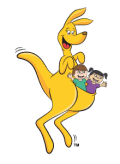Written by Dr Jane Williams
 All our physical actions take place in relation to the space that we occupy. Spatial awareness is the knowledge of how much space the body occupies and needs, and how to orientate oneself in that space. We need this awareness to relate comfortably to other objects and to other people, and to be able to relate objects to objects, and people to people.
All our physical actions take place in relation to the space that we occupy. Spatial awareness is the knowledge of how much space the body occupies and needs, and how to orientate oneself in that space. We need this awareness to relate comfortably to other objects and to other people, and to be able to relate objects to objects, and people to people.
Babies are born with little spatial awareness. Prior to birth, they are tucked up in a fluid-filled sac that limits their spatial experience to a confined area. Although, as most mums will confirm, babies do learn that they can move quite vigorously in and around that very limited space! Once born, the space that surrounds a baby changes considerably. Rather than a fluid-filled enclosure, an infant is now exposed to a limitless airy environment. As a result, it takes babies some time to understand how their bodies fit into the space around them, and how to move their bodies through it. They learn spatial awareness through touch and movement opportunities and experiences.
Spatial awareness grows as the baby becomes aware through touch of the position of his or her mother – first by feeling, and then by vision. As infants’ move, they learn that they have parts that they can move, and through experience, how far or fast they need to move to get that toy!
Through rolling, crawling, creeping, cruising around furniture, walking, stepping backwards, forwards and sideways, swinging through space on a swing or swinging by the hands from a bar, tumbling, balancing, hopping and skipping, children learn about direction, distance and how much they need to prepare their muscles to move within a designated area. It is amazing how fast they learn! Often they only need to do the movement incorrectly once to learn the ‘best way’ to achieve it next time. Once the brain has ‘locked in a successful pattern’ it no longer has to ‘think about it’ and the movement becomes part of a complex array of movement patterns that become ‘automatic’.
The very young child estimates depth, width and height of an object through touch and movement. Body awareness is an essential prerequisite to space awareness, and so is input from the organs of balance in the inner ear – the vestibular system. The vestibular system operates like a gyroscope for the brain – it tells you exactly where you are in relationship to gravity (upright, sideways, lying down etc.), whether you are moving still, or how fast you are going and in what direction. This information is particularly helpful to the eyes, as without knowing where you are, or where you are going, visual information is meaningless. The vestibular information provides a physical reference that gives meaning to what we are seeing – how far away an object is, how you can move towards, or away from it and how long it will take you to get there.
Spatial awareness is important for:
- Judging distances
- Understanding concepts such as up, down, above, below, in front of, behind, or near and far
- Lining things up when pasting, colouring, and for writing across a page and between the lines
- Estimation skills required in writing and setting out work, or in mathematics
- Games and sporting activities, for example timing when catching a ball
- Development of a good sense of direction
How parents can assist in the development of spatial awareness.
- Encourage the natural developmental movements of rolling, crawling, creeping
- Play games that include rolling, tumbling, spinning and up-side downs
- Build an obstacle course that encourages children to stretch, climb, go though, over, under, stepping over, around and past objects, and jumping from place to place.
- Engage in fun physical contact play – hugs, rolling on the floor together, chasing, pushing, and pulling games, bobbing up and down, swaying and dancing. You can even use your own body as a climbing frame for your child!
Dr Jane Williams (PhD, BMgt, RN(Paeds)) is the Research and Education General Manager for GymbaROO and KindyROO. She is one of Australia’s leading experts on baby and child development.

